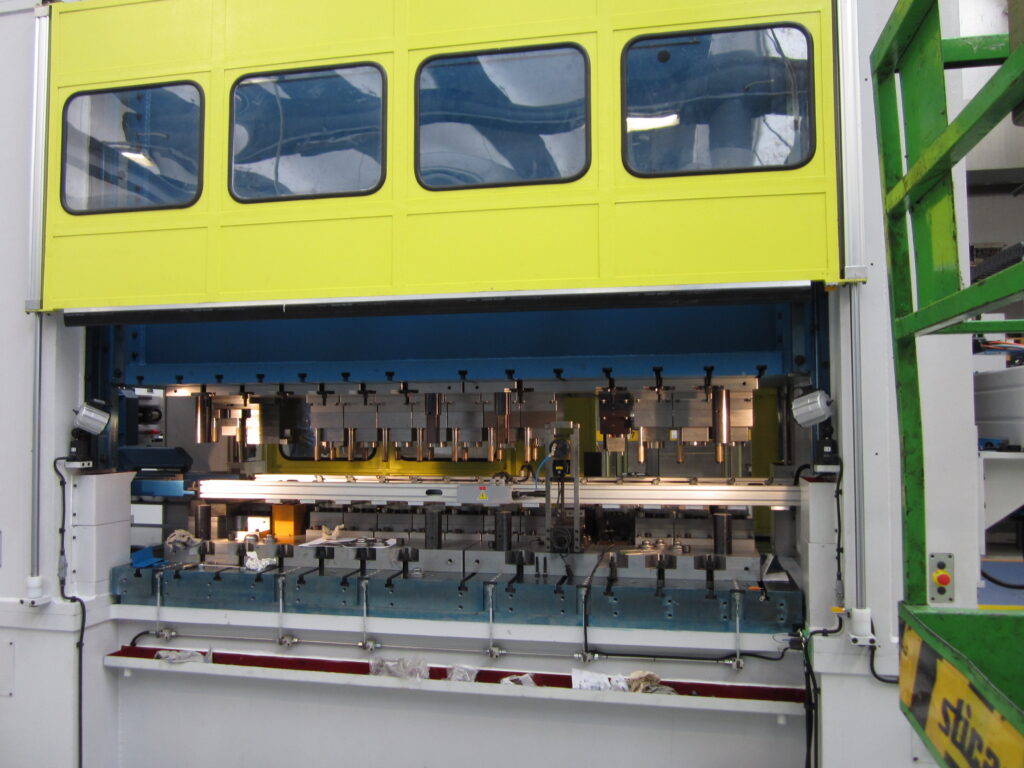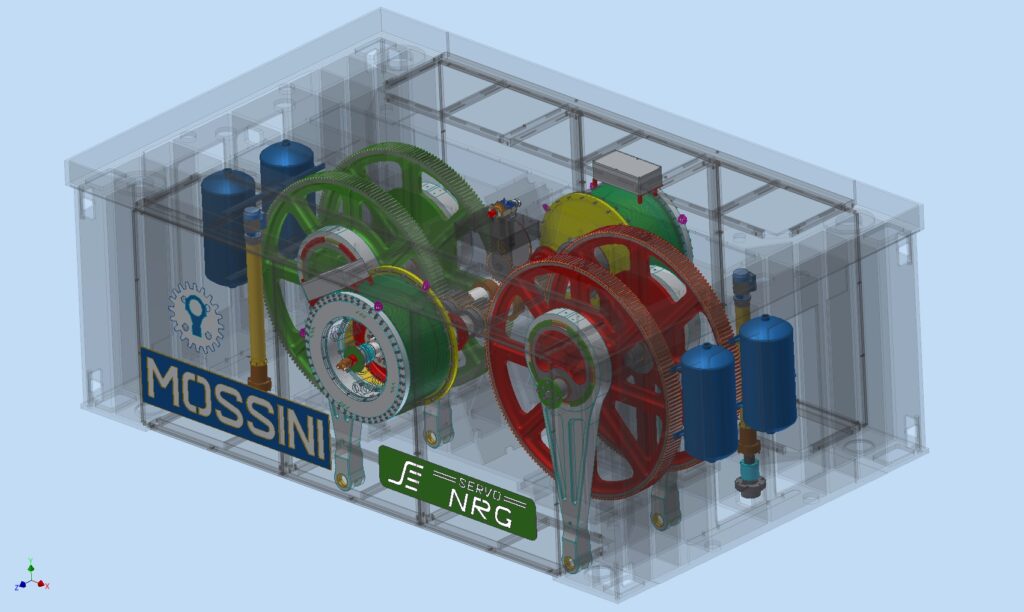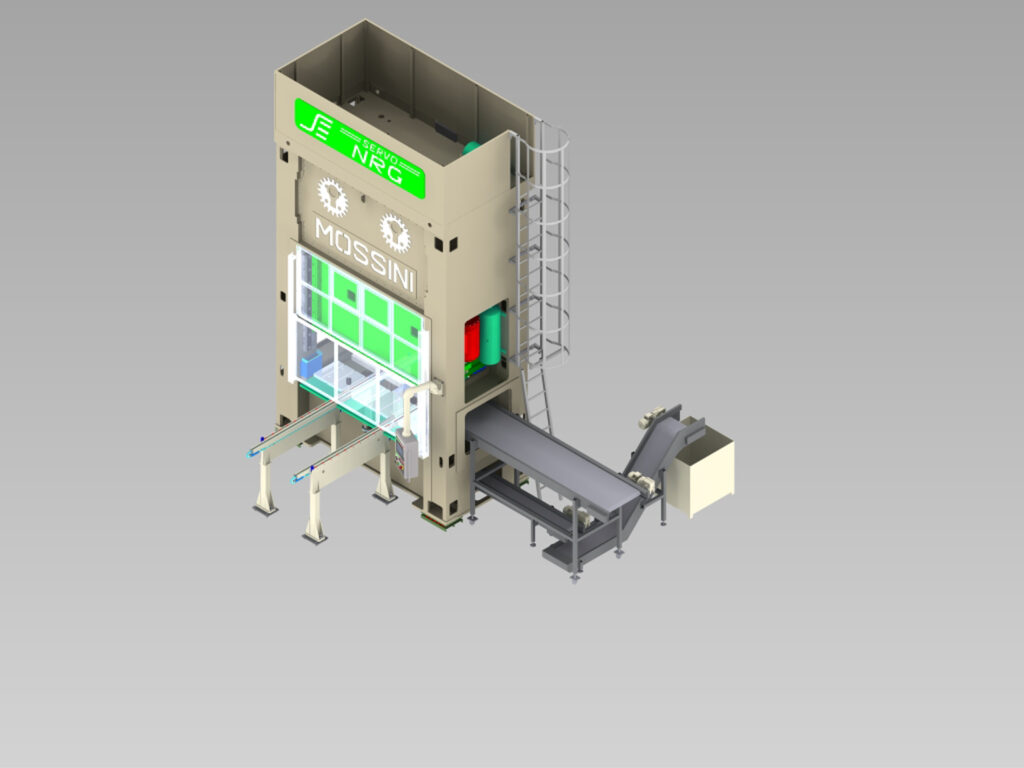A “medium-size” servo press assures great productivity and high flexibility in addition to simpler use and lower energy consumptions in comparison with conventional machines.

When we speak of “electric press” or, more precisely “servo press”, we mean a mechanical press that on one hand is based on its traditional kinematics “crank – connecting rod”, on the other hand it can suit all forming requirements, from coining to blanking and up to deep drawing. Luca Sala, of Mossini S.p.A. (Pescate, LC), reference company in the press production sector, explains: «Electrical presses can perform any typical curve of the energy application, and with better quality than mechanical ones. This derives from the possibility of regulating speed and position of the slide in real time, and with optimal precision». Servo presses can therefore be used in any sector of the cold sheet metal forming and it is not fortuitous that they are arousing more and more lively interest, especially by those subcontractors that must constantly change their production, manufacturing different and complex pieces. Sala adds: «Nowadays the trend is consolidated, and the market is orienting towards this type of technology for small tonnage presses as well as for high tonnage ones because the final result is represented by the improvement of the machine performances, the rise of productivity and flexibility. And the latter is a very important characteristic because, owing to the current economic situation, all subcontractors have modified their way of working: today small-size batches are requested, so that it is necessary to rely on versatile, complete and quickly programmable machines».
A PLUS

Mossini is a forefront brand in the production of servo presses, with a range that includes machines from 80 up to 2,500 tons. «In this type of machines – adds Sala – thanks to the so-called “pendulum modality”, it is possible to have the exact machining stroke at disposal». All that has been made possible by two essential factors: first of all, the adoption of a particular type of motor, called Torque, whose main characteristic consists in the capacity of providing a high torque value in the operation zone with constant torque that, in its turn, is particularly wide. And, suitably sized, that motor allows supplying, also at low speed, higher energy values for forming than those of standard flywheel machines. Secondly, Mossini has turned to the implementation of a sophisticated system of control and regulation, result of the merging of a modern and powerful hardware with software integrating totally new functions, fruit of the evolution and of the algorithms developed in decades of development and research. «The energy consumption of such machines, under normal conditions and with equivalent die, is lower than traditional presses, which need extra power for the brake-clutch group during the start/stop. Besides, thanks to the installations of batteries of condensers, the servo presses can recover the energy generated by the motor in the slow motion phases, so that it can be used again later on. All this results in a notable saving of electrical consumptions», specifies Luca Sala. Besides, on the operator panel it is possible to monitor the quantity of average delivered energy (Kw/h), and this allows an assessment of the real energy consumption.
THE RIGHT “SIZE”

Among the different servo presses by Mossini Company, we are presenting in these pages the PDM/2B/E/315 model, 315-ton electrical press. Luca Sala: «It is a “medium size” machine with intermediate nominal force in the ambit of the performances of our range. It represents then an interesting solution not only for big automated companies but also for small-medium subcontractors, which need highly flexible machines to remain competitive, also because, as well-known, the average sizes of batches have drastically decreased». The structure is of modular type with upper control and preloaded tie rods. Bed, columns and head, dimensioned with FEM systems, are made of electrowelded sheet metal, normalized in furnace before the machining in order to relieve the internal stresses and the risk of each possible deformation under load, as well as to achieve better resistance. The various parts of the structure are connected by four preloaded tie-rods and the reference centring assures the best alignment of the structure and the perfect assembly. This results in the high qualitative standard of the components produced by Mossini servo press. Other important features concern the slide made of welded and stabilized steel before the machining, the ground guides with anti-seizure material and forced lubrication with oil recovery, the very precise systems of regulation of transversal and longitudinal backlashes, the stable “die changer” that can be perfectly positioned by means of conical centre squares, hydraulic clamps for the plan stop during the forming phase and so on. Luca Sala adds: «An electro-mechanical system, coupled with the mechanical clamping system, grants the category 4 for the operator’s safety, and opportune mobile protections grant the inaccessibility to the zones of highest danger».
HOW MANY PRESSES IN A SINGLE PRODUCT
The ductility of the servo-press allows the adaptation to whatever forming requirement. Programming a machining cycle, however, is a complex activity. This requires, in addition to an accurate analysis of the phases and of the magnitudes that define the cycle to be implemented, also a deep knowledge of the performances and the limits of the motor and of the drives as well as, obviously, of programming techniques and languages. «That activity – goes on Luca Sala – cannot be entrusted to customers. Mossini, thanks to its fifty-year experience, and coherently with the target of supplying an extremely performing and, at the same time, user-friendly product, has developed the machining cycles of more frequent use, leaving the user the only burden of choosing the desired modality through a control panel, without mechanical interventions». The machining modalities developed and standardized are: eccentric, Link Drive, toggle, double toggle, pendulum, pendulum with slow motion, free cycle. In the “pendulum” modality the eccentric shaft, just like a pendulum, rotates between the two symmetric positions equidistant from the bottom dead centre inverting, at each stroke, the rotation sense. It derives from that a precise stroke regulation, irrespective of the number of cranks of the press, and the possibility of machining with much higher rates than with a traditional eccentric press. Luca Sala: «The “pendulum” modality is a much appreciated function because it allows reducing the stroke and then, all things considered, increasing the machine strokes and then users’ productivity». The “pendulum with slow motion” modality adds the function of slide speed reduction in the machining phase to that of stroke regulation. The system permits to choose among three different levels of reduction. The “free cycle” modality allows emulating the cycle of a hydraulic press (fast approach, machining stroke and ascent), by simply defining the approach speed, the machining starting point, the machining speed and the machining end point. Sala: «In this case the PLC automatically calculates the point of slow motion starting to reach the machining point with the programmed machining speed and the average productive rate is calculated during the automatic cycle started». Besides, special cycles suitable for satisfying customers’ particular needs are developed. Luca Sala ends: «Servo press is an extremely productive and flexible machine, being adaptable to several applicative needs. The fast and easy tooling is granted by the simple and immediate interface of the control panel, and by a die magazine function with which it is possible to save all the data concerning the die: cycle, slide height, operational mode, cams, blows, etc. In this way it can be exploited by 100% of its potentialities, using different dies and various operation modalities ».
TROUBLES IN ITALY, IT IS NECESSARY TO REACT
It is important, when we write about topics of technological nature, to try to collect authoritative opinions and witnesses to highlight the general market trend, and this is even more relevant in this period in which companies must come to terms with the, probably, longest and hardest crisis of the post-war period. In the opinion of Luca Sala, the situation is rather critical «on one hand the demand for plants has decreased, thus involving a drop of the number of job orders, on the other hand work has become completely “unpredictable”, alternating peak and stagnation phases, which does not allow programming the work on the medium-long term». Is it possible to make a distinction between Italian and foreign market? «Yes, certainly. As well-known, the Italian situation is very difficult and the trend, if possible, goes towards a further decrease. Unfortunately prospects are not good in the short and medium term. Abroad, luckily, the situation is different, and since we work hard “beyond Alps”, we succeed in maintaining a good trend of sales, despite everything». What are the sounder areas? «Germany is still the driving engine of Europe. But also Eastern Europe and Turkey are steeply rising. Outside our Continent, Brazil is offering good business opportunities». What are, in our nation, the most critical aspects worth considering? «On one hand, as already said, the drop of demands for presses and lines is worrying. On the other hand, it is very serious the financial situation that prevents companies from having the right liquid assets to go on. And nowadays this does not concern only users, that’s to say machine buyers, but also the manufacturers of these machines».
A REALLY COMPLETE PROPOSAL
Mossini S.p.A. (Pescate, LC) is an Italian excellence company able to offer sheet metal forming solutions to meet the productive requirements of its customers, in time and at reasonable costs. The range includes: conventional eccentric presses, Link Drive mechanical presses with slow motion, eccentric presses with Desmodrive patented system of programmable slow motion, hydraulic presses, triple-effect hydraulic presses, die spotting presses, multi-slide hydraulic presses and electrical presses. The production is completed by presses and lines for hot forming, for the ring forging and rolling. The Pescate enterprise constantly invests in technology, focusing both on workshop machines and on calculation and design instruments, and stakes on research and development to offer updated, sturdy, safe and reliable products. Besides, it designs and customizes turn-key solutions studied according to customers’ productive and economic requests. It also provides an attentive and punctual after sale tele-service, with dedicated and skilled personnel. The company, established by Mario Mossini in 1970, in over forty years of activity has become a reference business in the sector of mechanical/hydraulic presses and of production lines. “Production and design”, including steel structural works, are a “corporate good” to be protected, and then maintained and developed inside the company itself. That philosophy has permitted (and permits) not only to widen the productive range while preserving the high requisites of quality, productivity and reliability, but also to develop great professionalisms and necessary competences to face tomorrow’s challenges.
MACHINE IDENTITY CARD
| PDM/2B/E/315 – 315 ton Mossini Electrical PressSERVO | |
| Nominal force | kN 3150 |
| Crank number | n°2 |
| Fixed stroke | Mm300 |
| Variable strokes per minute | n°15÷60 |
| Variable stroke in pendulum modality | mm 60÷240 |
| Variable strokes per minute in pendulum modality | n°15÷90 |
| Worktable | mm 3000×1400 |
| Slide dimensions | mm 3000×1400 |
| Working distance between columns | mm 3000 |
| Lateral window in columns | mm 1000 |
| Powered and visualized slide regulation | mm 250 |
| Distance between plan and slide, upper regulation, max. stroke at the bottom | mm 700 |
| Feeding net power | kW 250 |
| – Motor drive power | kW 560 |



